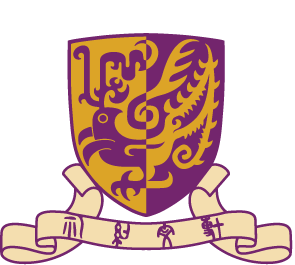
 | 2023Professor Katalin KARIKÓDoctor of Science |
We are here today to honour Professor Katalin Karikó. Many – perhaps most – of us here will have direct,personal, reasons to be grateful to her – I certainly am– and all of us have more general reasons for gratitude. The Pfizer-BioNTech vaccine that she made possible was widely available in Hong Kong as well as globally. It was a key element in limiting the human cost of the Covid19 pandemic. To understand how this happened we must link an individual story with a species-wide one.
Professor Kariko was born in 1955, in a village in Hungary. An Iron Curtain stretched across Europe. Many scientific journals were unobtainable in the Soviet bloc, leaving scientists there cut off, even those working in institutions with great scientific traditions. For years one of my colleagues systematically photocopied articles in Western journals that he considered particularly important, and posted them to Eastern Europe to scientists in his research field, to help to keep them updated. This is the background against which Katalin Karikó went to school, and developed her interest in natural history. Aged fourteen, she came third in a national biology competition, and subsequently won a place at the University of Szeged where she went on to gain a PhD, followed by a position as a postdoctoral fellow at its Biological Research Centre. But in the mid 1980s its research funding was drying up and she decided to move to the USA with her husband and her two-year old daughter, Susan. Currency controls limited the cash that could be carried out of Hungary to just $100; she sewed a further £900 into Susan’s teddy bear and arrived at Temple University, in Philadelphia, in 1985 to take up a further postdoctoral position. She was already thinking about a revolutionary idea, which drove her research agenda and ruled her life, for good or ill, for decades to come. It concerned a completely new way to make medicines.
Modern humans are an evolutionarily young species, just a few hundred thousand years old. We are hosts to a range of parasites, including some that are now unique to humans. We have the non-communicable, built-in diseases of old age or genetic errors, and those driven by our lifestyles. We also have diseases caused by infectious agents, including bacteria and viruses. These took radical, new directions when the development and spread of agriculture around 11,000 years ago led to stable, dense populations of our ancestors living in close proximity with each other and with the animals they domesticated, but also alongside further species like rats and mice which turned up uninvited and stayed. Some of those animals’ diseases, along with those of additional species that are hunted and consumed, became our ‘zoonotic’ diseases in a process (which can be a two-way process) that continues to this day. Zoonotic bacteria and viruses are responsible for epidemic and pandemic disease outbreaks from the earliest recorded plagues to modern influenza and Covid-19. Our only ways to contain them used to be purely behavioural. Isolation and quarantine were widely deployed long before we understood the mechanisms of disease transmission or the agents responsible. These have remained as our first, and sometimes our only, defence well into modern times, as in the response to the catastrophic influenza pandemic of 1918-19 and the initial management of much more recent epidemics. While public health measures like water purification and the development of sewage systems demonstrably controlled 19th century cholera epidemics, at the individual level it was the treatment of smallpox that started a biological revolution – first with variolation, which probably had independent origins in Africa, China, and India and was introduced to Europe and North America almost exactly 300 years ago – and then with vaccination. Not until the late nineteenth century did Louis Pasteur develop the world’s second vaccine, for cholera in chickens. That stemmed from a chance discovery that prolonging the time the bacterium responsible was cultured in a laboratory medium reduced its virulence without affecting its ability to generate immunity when reintroduced into chickens.
Since then, vaccines have been developed to control many infectious diseases or mitigate their effects. Two have been eradicated altogether (smallpox in humans and rinderpest – a possible ancestral origin of human measles – in cattle). Vaccine technology, training the immune system by using killed or attenuated infectious agents, or even just some crucial parts of their structure, has developed steadily from its beginnings, becoming ever more sophisticated.
But Katalin Karikó had a truly radical idea – a complete step-change. Might it be possible to administer no more than the code for making part of a target – be it virus, bacteria, cancerous growth or whatever – and leave it to the recipient’s cellular mechanisms to manufacture the target product itself, and then develop an immune response to it (or, following a quite different path, repair a damaged organ)?
We know how to write the molecular instructions for making proteins. Doublestranded DNA carries our genetic codes, but to turn those codes into protein it makes RNA, which carries the genetic message to cellular protein factories. The first reports that this messenger RNA – mRNA – could be carried by fat droplets into cells, including human cells, and produce proteins there appeared in the 1980s. That demonstrated a principle. But turning that into a practical method that works in living animals turned out to be extraordinarily difficult. Injecting mRNA into mice made them sick. It elicited an immune response to the mRNA itself and destroyed it – and you can never get messages if you shoot all the messengers. Many believed that the message could never be delivered successfully – that this was a great idea but one that would not work in practice. No one wished to award a research grant to what was widely deemed a lost cause.
Research grants fund more than just the costs of materials and equipment. They fund personal salaries and, indirectly, whole departments, institutes, or universities. Scientists who cannot get grants have minimal career prospects, and no resources with which to pursue their ideas. Most give up and change track, or get out of science altogether. Dr Karikó did neither. She stuck to her programme despite the personal costs. Ten years after arriving in the USA, and now at the University of Pennsylvania, she was warned to drop her mRNA work or else she would herself be dropped from the University’s faculty position. She chose the latter, accepting a substantial pay cut and reverting to a hand-to-mouth existence. Two years later, a chance encounter with Drew
Weissman led them to start collaborating, and together they had a breakthrough. You will doubtless hear the details from her directly, later today, but in essence they found that biochemically tweaked mRNA molecules can retain – or even enhance – their protein synthesising capacity while no longer eliciting an immune reaction themselves. Like attenuated viruses, they could safely deliver the messages.
That breakthrough came from a combination of experimental observation and scientific reasoning that had hitherto eluded everyone. Coupled with work carried out elsewhere on the use of lipid nanoparticles to package the mRNA for injection, the components for practical mRNA vaccines were now available. When a new variety of pneumonia was reported in Wuhan, and Zhang Yongzhen in Shanghai published the structure of the virus responsible, this new technology was rolled out startlingly quickly. Pfizer-BioNTech, with whom Dr Karikó now worked, took a matter of hours to construct mRNA that would sensitise the recipient to a crucial part of the virus, producing a highly successful vaccine that has saved enormous numbers of lives, including – with reasonable statistical certainty – people in this room, quite possibly including me. And this is just the beginning of what such vaccines can do.
Dr Karikó demonstrated astonishing determination, application, and self-sacrifice to bring an epically challenging programme of research to a successful outcome at what turned out to be a truly critical time. Along the way she faced down the most daunting uncertainties, and personal obstacles, from finance to illness. Her story is richer than I can record here: she has rightly been awarded prizes far too numerous to list and there will undoubtedly be more. We are just one voice amongst many when we thank her for all she has done. Vaccines are a wonder. How fortunate we are to live when their efficacy and possible applications are steadily growing.
Some of her personal qualities have clearly crossed generations. Her daughter Susan’s teddy-bear played a transient but important part in this history. Susan herself grew up in the USA and took up rowing, and has won two, Olympic gold medals in that exceptionally demanding sport. I hope that her bear enjoys a most honourable and well-repaired retirement.
The citation is written by Professor Nick Rawlins, Pro-Vice-Chancellor / Vice-President (Student Experience) and Master of Morningside College




